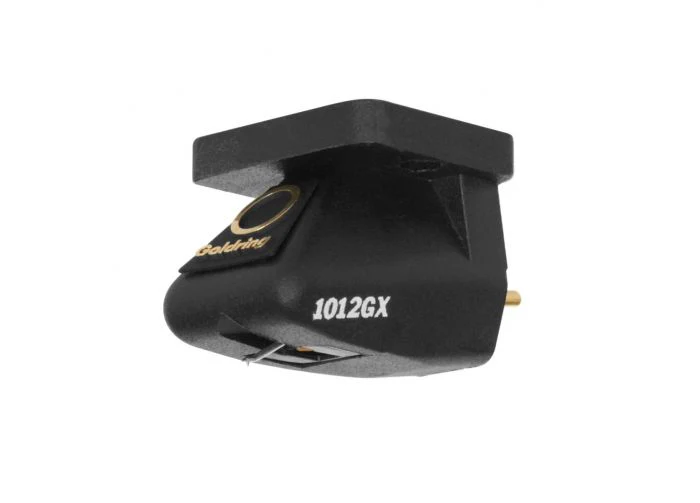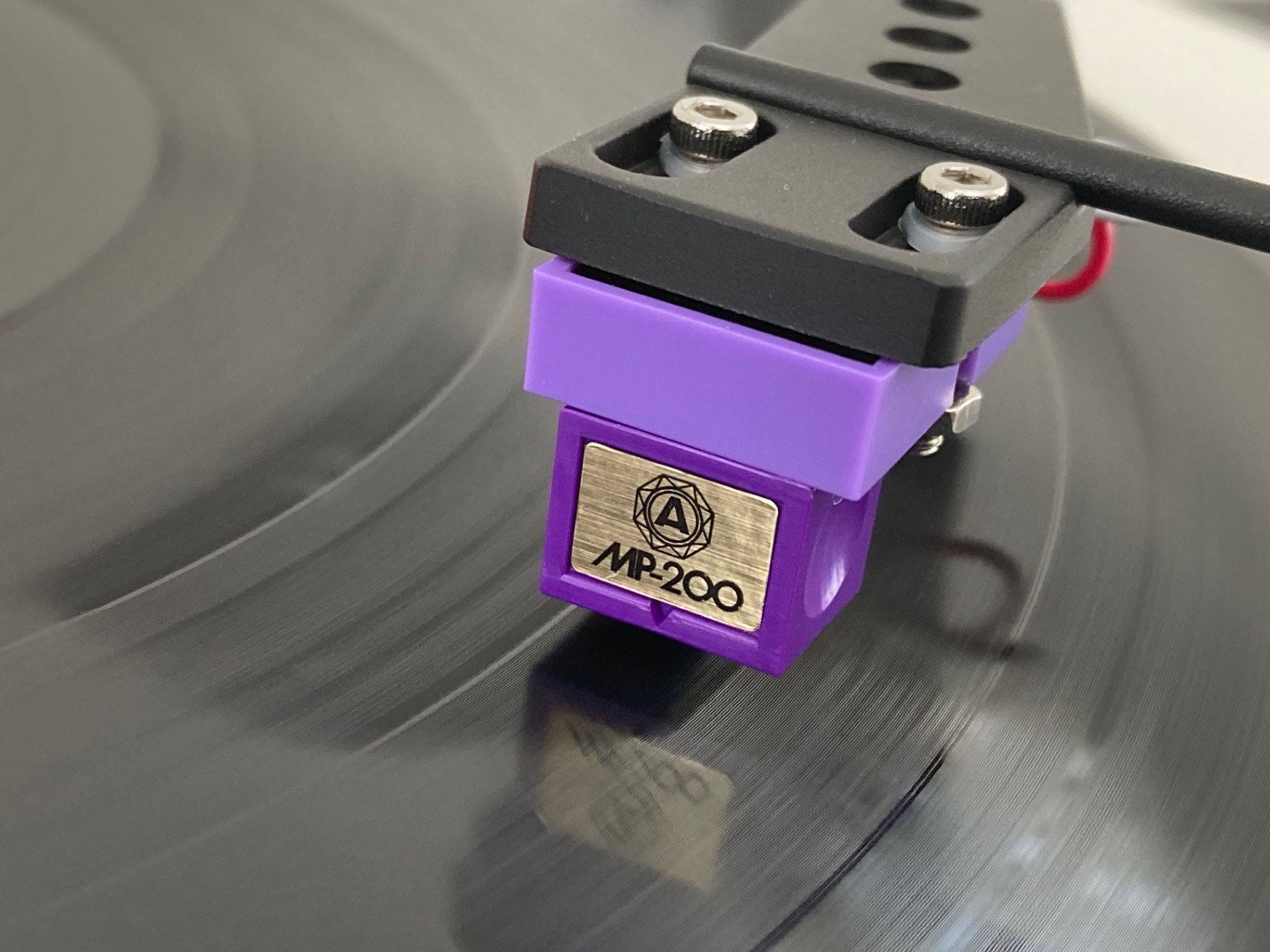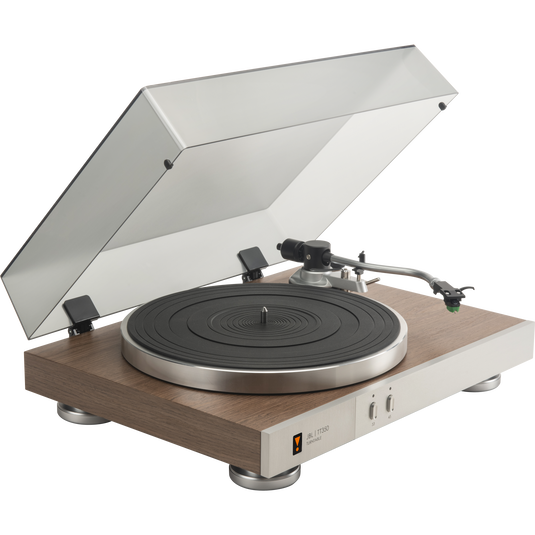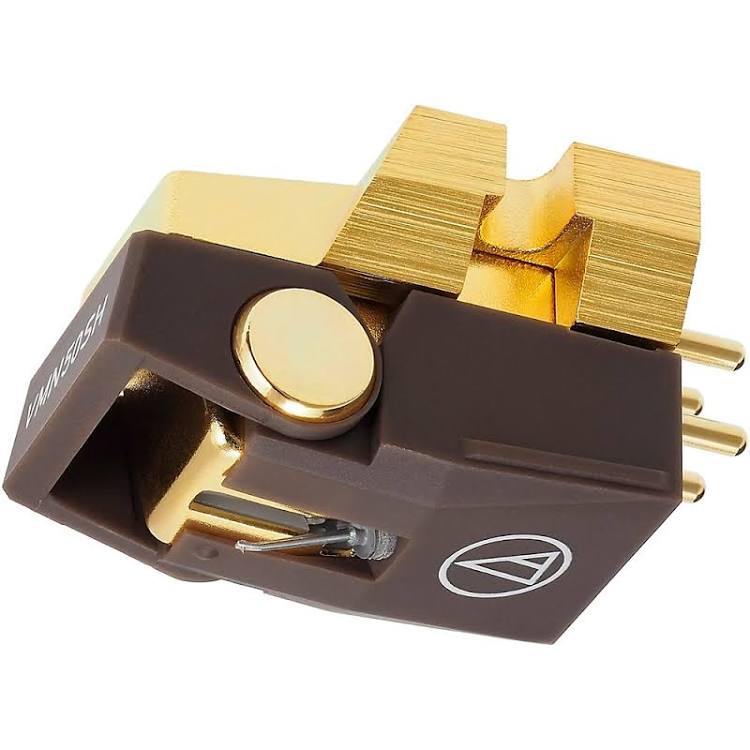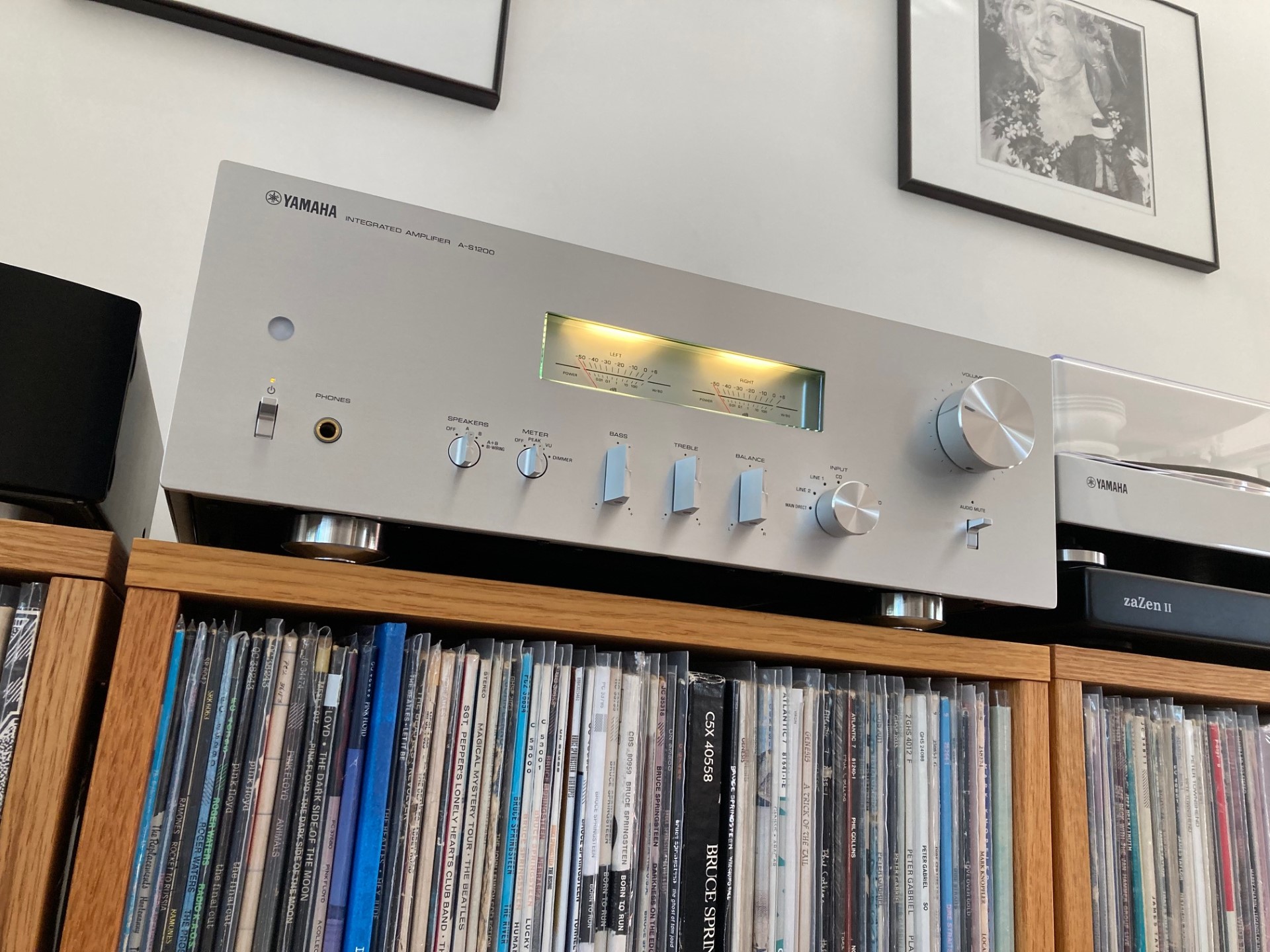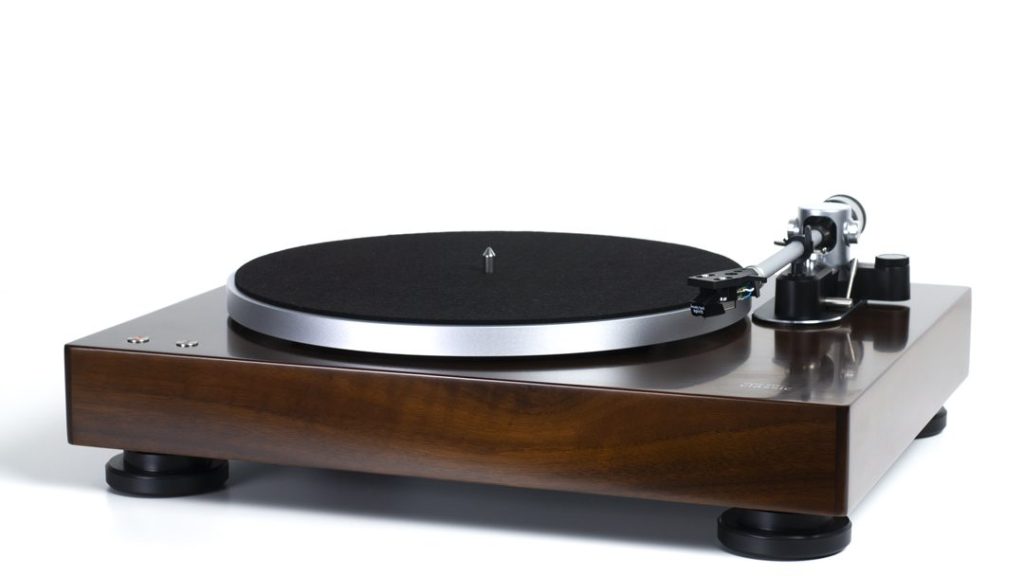
Until recently, I'd discourage turntable shoppers on tight budgets from buying new. It was too easy to pick up a very competent, built-like-a-tank Japanese direct drive, or something more modest like a classic Dual CS-505, for short money. They last for decades and easily compete with new models in the $500 range. However, hipster types, for whom audio jewelry is suddenly cool, have driven the price of many previously unloved vintage models into the high hundreds of dollars. (Of course, after they get them, they haphazardly install the cheapest cartridge possible, and then wildly overpay for new pressings of classic albums cut from CDs. If you want to cringe, search for turntables on Reddit and see what I mean.)
Buying new suddenly seems like a better proposition for everyone involved. Hipsters in particular will at least be getting a turntable that arrives correctly set up from their dealer or the factory. Functional considerations aside, most mid-priced models today are pretty stark looking, fully manual affairs with all the charm of a space heater. They're certainly not what people my age fondly remember, nor do they have much appeal for younger folks genuinely longing to discover the all-around pleasures of a 1970s era Denon or Pioneer or you name it. And the sound quality is often nothing to write home about.
But everything old is new again with the $649 Music Hall Classic, which includes all essentials for playing records, including a good cartridge and even better onboard phono preamp. It's a handsome thing with a sturdy modern-vintage vibe, plus the never-gets-old convenience of semi-automatic operation that lifts the tonearm and stops the platter at the end of each side. That alone makes it a welcome discovery for many old and new vinyl fans alike. Yet it's actually a cleverly modernized take on classic record players, so much so that it caught even me by surprise.
It's no secret that many of today's turntables are coming out of a small handful of factories quietly doing contract work for big, well-known brands. Those same factories have been derided by some enthusiasts, but the truth is, their engineering and build quality are potentially competitive with anyone, if given the chance. Admittedly, it's natural to be concerned when a factory's website boats equally of their audio products alongside deep fat fryers and dehumidifiers. Yet one of those factories also reverse engineered the old TD124 for Thorens, creating a reimagined direct drive version that sells for $12,000. Thorens doesn't hide that fact, nor should they. Look at it this way: Kia could probably build a supercar to compete with Ferrari if they wanted to, if there was a market for it, but there isn't, so they don't.
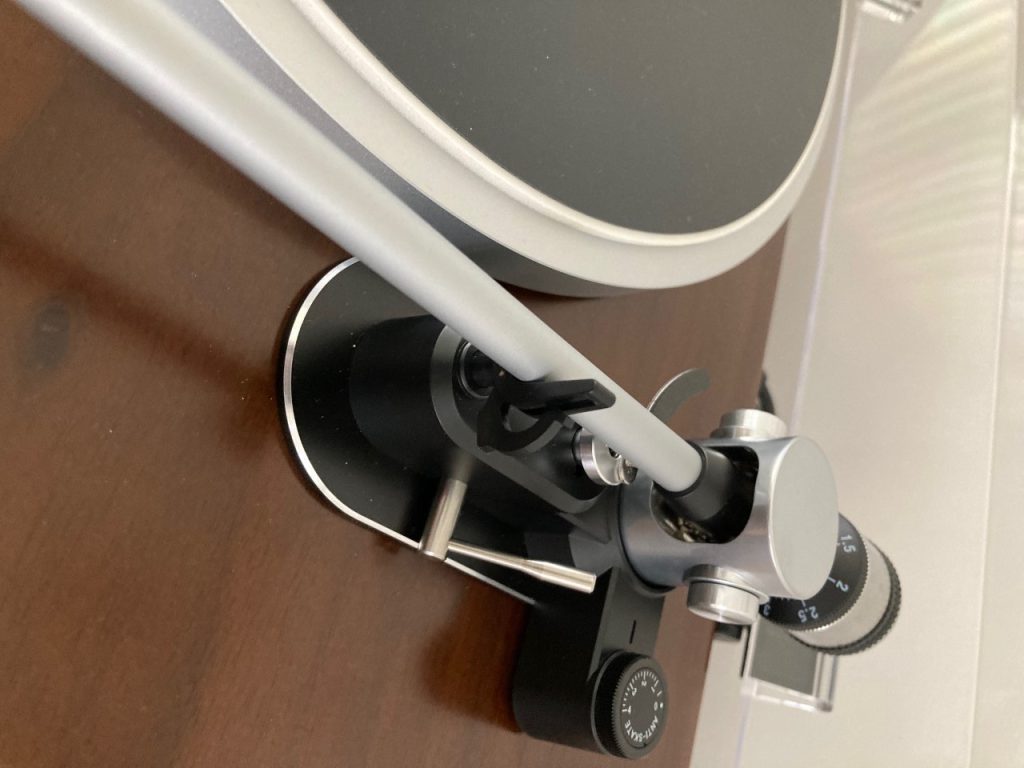
Maybe that's why the Classic feels to me like an engineered product as opposed to a collection of parts thrown together. I've seen its relatively lightweight platter before, and the motor and its mounting scheme also look familiar, as do at least some parts of the tonearm. New to me are the Classic's sleek touch-sensitive controls and automated tonearm lift, shared by nothing else I know of. Clearly, this isn't a case of lazy 'badge engineering,' i.e., simply slapping someone's brand name on an existing product. It's a confidence inspiring package that gets better in use.
That automated arm lift? It's not mechanical like most of the old Japanese turntables I so admire. Instead of employing gears and triggers that work well but add potentially detrimental drag on the tonearm, the Classic employs a sensor that detects silence when the arm nears the end of its travel, activating the arm lift after a few rotations. It's not the slickest thing going, since it kind of boings up abruptly rather than rising smoothly and steadily, but it's not terribly crude in operation, and worked 100% reliably in my testing. By contrast, the controls for 33 and 45 are expensive-feeling touch sensitive, metal buttons, not toggles or switches. Tap one, and the platter gets up to speed quickly, almost like a direct drive, with no belt slippage. Even my carbon fiber record brush didn't slow the platter like it has with some other belt drives.
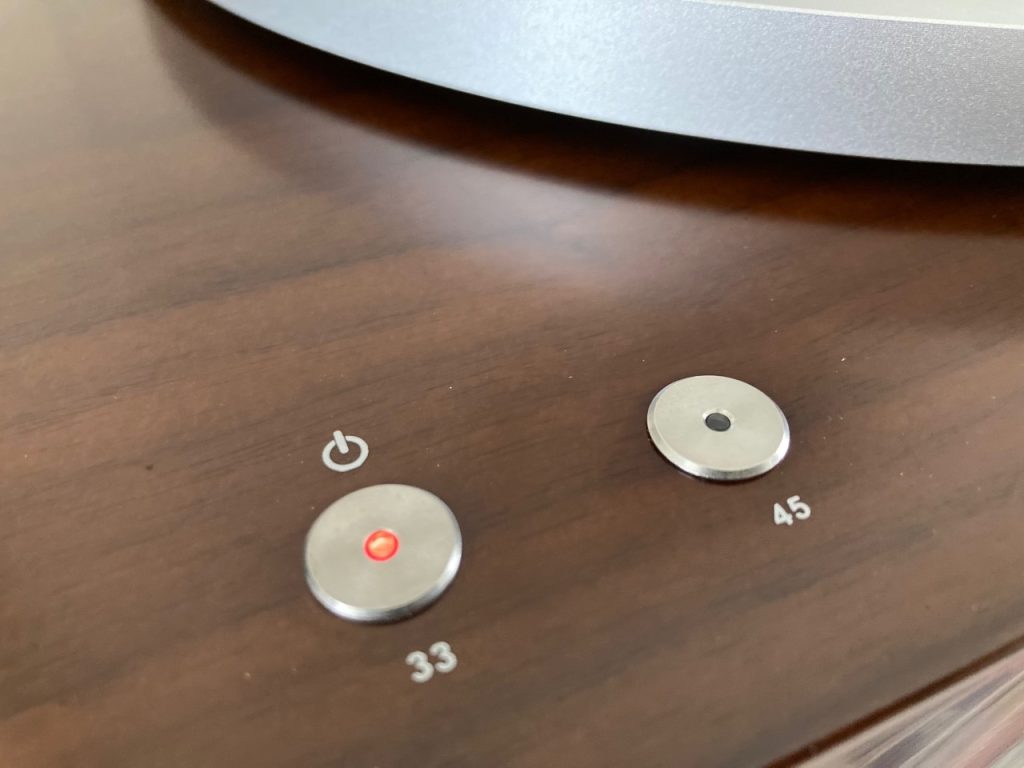
The Classic arrives double boxed from the factory and packaged in a way that makes assembly obvious. Five minutes is all it takes to unbox and spin records. The tonearm was friction-free, lacking obvious play, and felt precise. Its platter wobbled slightly, but so did that of the much more expensive Technics SL-1200MK7 (reviewed here). You don't even need a tracking force gauge to use the included cartridge, because the tonearm's end stub is marked with a line indicating where the counterweight should sit to achieve the recommended 2-gram downforce.
There's also a built-in phono preamp, an idea I'm slowly warming to, and it's genuinely defeatable unlike most tables these days; a switch on the back completely bypasses it and takes the signal directly from the arm leads, claims Music Hall. The only below-par touchpoint is the cueing lever. It's a little gritty in operation, but the action is very smoothly damped, unlike the much more expensive Technics.
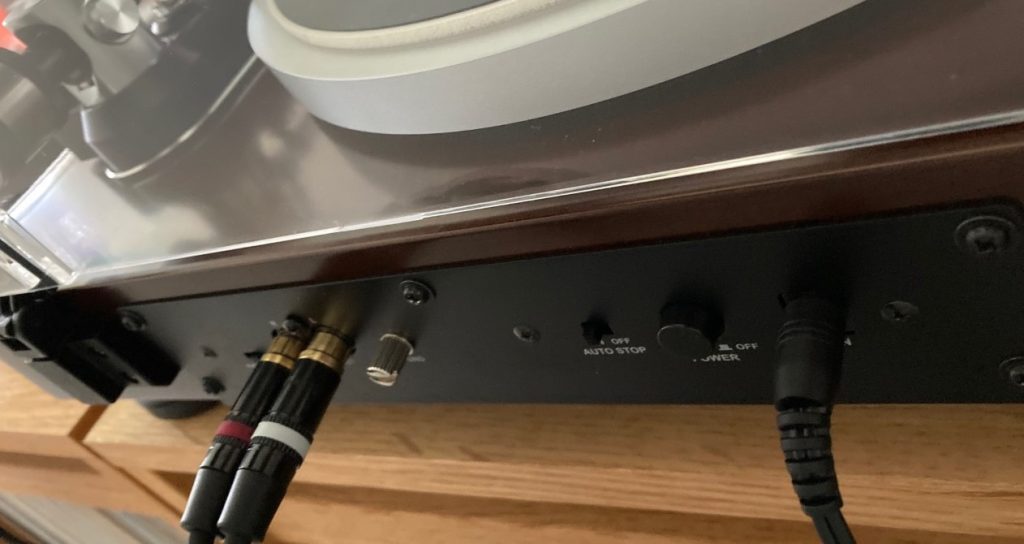
First things first: this is a totally usable and enjoyable table right out of the box—something you can't take for granted. The Music Hall Spirit cartridge is a variant of the budget legend Audio-Technica AT95, and it works competently here. Much better is the onboard moving magnet phono stage, which is truly good, though syrupy sounding with the stock cartridge. My chief complaint is that it lacks fine texture and ultimate transparency, and confines the soundstage more tightly around my JBL L100 Classic loudspeakers, whereas Pro-Ject Phono Box DS2 and Avid Pulsus standalone units opened things up substantially.
While the onboard preamp constrained the Classic to about 75% of its potential, it's no mere afterthought, being equal to or better than what you'll find on many $500-$1,500 integrated amps these days. The sound was crisp, direct and dynamic, though the outboard units did have a notably quieter, weightier, and more tonally colorful presentation. Another advantage: since the tonearm is wired directly to the preamp, there's a much shorter signal path, presenting fewer opportunities for interference or signal degradation. For comparison, I happened to have a plug and play table in the same price range from another respected brand, and neither its included cartridge nor onboard phono preamp were competitive with those of the Classic.
If the Classic checks all the boxes for a 'lifestyle' product in terms of looks and ease of use, it's not at the expense of performance. This is very real product built with the audiophile in mind, as I quickly discovered while trying to upgrade the cartridge on the competing table. Not only couldn't it handle the weight of several cartridges, those that did balance on its tonearm represented, at best, marginal improvements. Not so with the Classic.
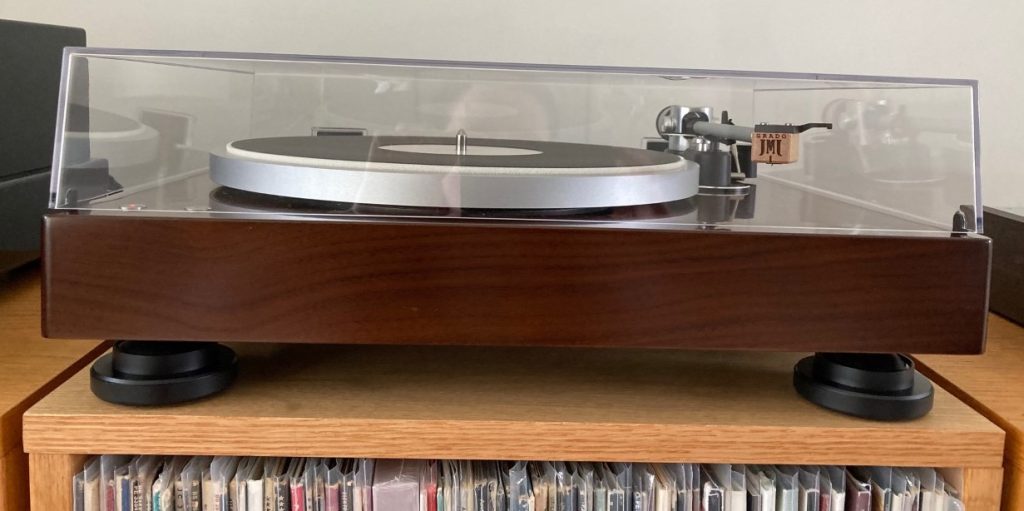 The Grado Opus3 ($275; reviewed here) is large and heavier than average, but setting it up presented no unusual challenges, and the Classic's detachable headshell added notable convenience. (Disappointingly, even a paper cartridge alignment protractor is not included, so you're on your own there.) Its arm is also not height adjustable, so I had to jettison the standard felt mat for something thinner to achieve a workable VTA. Once dialed in, the Grado added more palpability, richness and presence than the included cartridge, though it sounded dull and closed-in with the built-in preamp. Swapping again for an Audio-Technica AT-150Sa (discontinued; $549 when last offered) sharpened things up top-to-bottom, trading warmth for an extended treble, tighter bass response and a leaner but more exciting presentation. To me, that's conclusive proof that the Classic isn't just a starter table, but a solid platform that rewards thoughtful upgrades.
The Grado Opus3 ($275; reviewed here) is large and heavier than average, but setting it up presented no unusual challenges, and the Classic's detachable headshell added notable convenience. (Disappointingly, even a paper cartridge alignment protractor is not included, so you're on your own there.) Its arm is also not height adjustable, so I had to jettison the standard felt mat for something thinner to achieve a workable VTA. Once dialed in, the Grado added more palpability, richness and presence than the included cartridge, though it sounded dull and closed-in with the built-in preamp. Swapping again for an Audio-Technica AT-150Sa (discontinued; $549 when last offered) sharpened things up top-to-bottom, trading warmth for an extended treble, tighter bass response and a leaner but more exciting presentation. To me, that's conclusive proof that the Classic isn't just a starter table, but a solid platform that rewards thoughtful upgrades.
Listening to Shelby Lynne's Revelation Road (Everso Records EVER250), the vocals and acoustic guitar strums offered a 'you are there' quality that defines real hifi at any price. This was fairly early in my listening sessions, when I was actively trying to concentrate on the sound, but the Classic's inherent musicality eventually made note-taking an empty exercise. There's a guilelessness in the way the Classic plays records that defies banal criticisms. From dynamics to timbral accuracy to a soundstage that made me want to close my eyes and imagine the performers, the Classic did what all good components should, and even revealed a few performance details my six times more expensive Avid didn't.
By this point, I'd upgraded the included interconnect, mat and cartridge, which brought the Classic to around $1,200. That's not at all absurd given the Classic's demonstrated potential, but admittedly, I had this stuff laying around and didn't dig into my pocket to buy it. Still, I kept asking: would I rather have this maxed-out budget Classic or a base-level $1,200 table? I could argue both for and against, but ultimately what's important is this: your $649 investment in a Classic is one you can build on, rather than trading it in and losing half its value when you're ready to upgrade. Throw a few bucks at it and you get more atmosphere, more breath of life, more insight. The Classic is capable of detail retrieval, separation and vividness that the stock cartridge only hints at—particularly if you already own an excellent outboard phono stage.
In terms of obvious limitations, the Classic is midrange-centric, but far less so than you might expect. A well-chosen cartridge upgrade can tip its balance, within the table's inherent limits, to something airier and more extended than the included one allows. Make no mistake, the Classic doesn't compete with direct drives for forcefulness or snappy, start-stop transients but trades that off with more liquidity and organic flow. Backgrounds were quiet enough but not exceptionally so. This is all to be expected, more or less, and none of it detracted from my overall enjoyment.
It does come with ugly feet though, which would hardly even register on a less handsome table, but even here the news is not all bad. Despite looking like orthopedic shoes, they offer tons of height adjustment, which is crucial for anyone who can't offer the Classic a perfectly level perch. (I'm shocked at how many entry level tables completely ignore this point.) Your consolation prize for the feet is a crystal-clear, high quality dust cover sporting robust hinges, something far more likely to be noticed than the feet. It lifts cleanly off the table as well for those who prefer going topless.
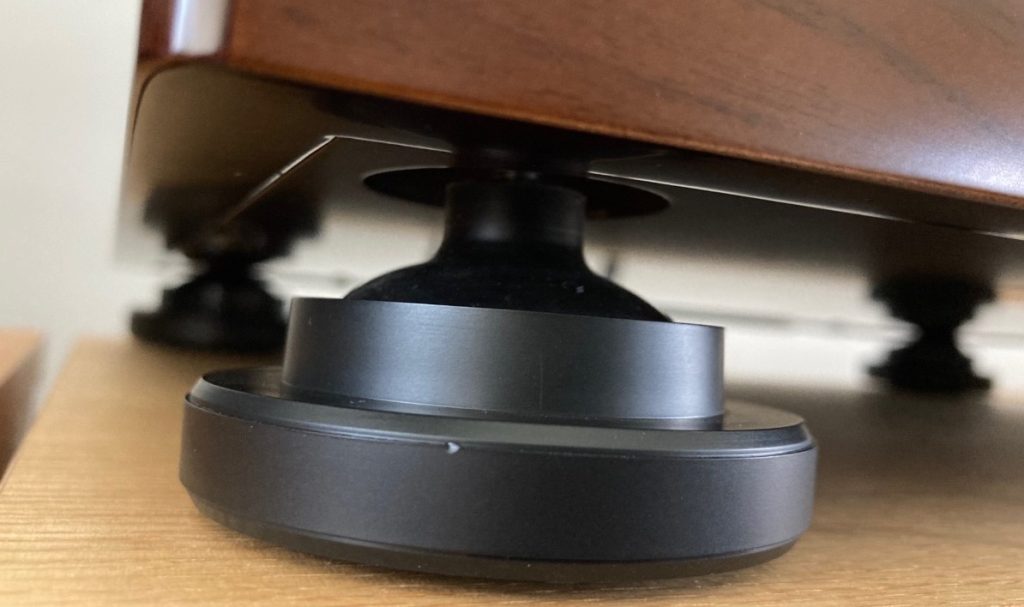
Getting back to the onboard phono preamp...it really grew on me. I fully expected to give it a cursory listen and move on, but I'm impressed. In fact, I'll eat my hat if this isn't the best of any turntable at or below the Classic's price. My baseline is the built-in phono preamp in Audio-Technica's otherwise talented Audio-Technica AT-LP1240USB (reviewed here), which was okay but kind of flat and generally lacking verve if memory serves (though in fairness, I've heard it has been improved). The other turntable mentioned earlier, the one that shall remain nameless? It didn't even manage to be okay.
As it turns out, the Classic's included cartridge is a much bigger bottleneck than the preamp, which you absolutely shouldn't judge by the Spirit alone. However, since it does seem optimized for the Audio-Technica sourced Spirit (as demonstrated by its inability to express the Grado's considerable virtues), you'd be wise to stick with something similar, perhaps preferably from the same maker. Swapping it for the aforementioned AT150Sa would flirt with overkill if you're set on using the onboard faculty, but something like the $249 VM540ML would make total sense, as would their $199 AT-VM95SH.
You'll need to spend more than any of those cartridges to buy a night-and-day better standalone preamp, so I'd advocate for upgrading the cartridge first. Once again, given that the preamp was likely voiced around the included cartridge, the key to success here is choosing a cartridge with a lean, tight, fast and extended character to counterbalance the Classic's tendency toward a richer midrange. And, of course, remember to warm it up before use like any other solid state component when using the onboard preamp.
With so many people buying their first turntables, Music Hall has done the world a solid by producing a complete product. After all, a great turntable isn't going to sound so great if it's plugged into a subpar phono stage. Many buyers these days think they're interchangeable like lightbulbs, so including a real-deal preamp will help prevent end users from hooking this up to one of those sad-ass $12.95 jobbers from Amazon and experiencing profound disappointment. I never thought I'd spend more than a sentence talking about an onboard phono at this price point, let alone five paragraphs, but this one changed my mind. If space is at a premium, I think a lot of people might choose compromising slightly on sound for a cleaner installation, or perhaps devote the rack space otherwise by consumed by a phono preamp to another component. (I did just that for part of this review, adding a tuner to my system for the first time in 20 years.)
To say that the Classic performs beyond its price point aesthetically and sonically is true, but ultimately unfair. You can do (a little) better in some ways but also (a lot) worse for around the same money. What you can't do is mash together the best attributes of other decks and preamps into any one machine. Nothing's remotely perfect at this price. The value here is that the Music Hall Classic chose its compromises wisely. It never sounded too soft or blunted; it moved the music along with authority, and I enjoyed listening to it just as much as some pricier tables. It also didn't insult partnering equipment costing many times its price.
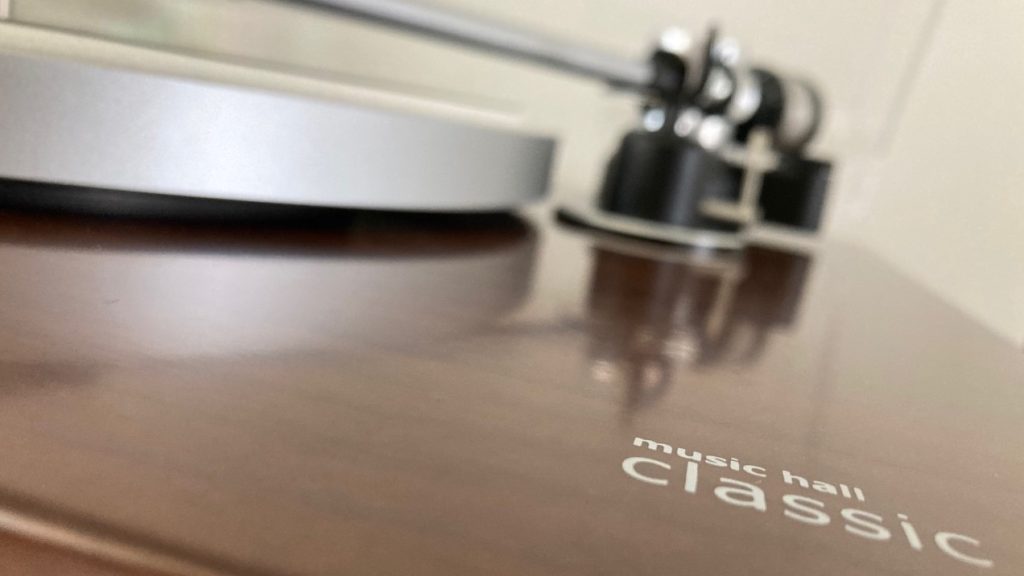
As a bonus, if your music system sits in your living room like mine does, it makes a handsome conversation piece. I wouldn't be surprised to see one pop up in a Crate & Barrel catalog. Music Hall managed to add a dollop of style and class atop of a solid foundation, unlike so many retro-styled record players these days that are designed primarily to look the part. If you're buying a turntable for aesthetics, buy this one and you won't be getting ripped off (or ruining your records). About the only thing that might give me pause when it comes to long-term reliability are the touch-sensitive speed buttons, but presumably the essential nature of those parts was given extra attention during R&D. If this is still spinning records 20 years from now, it'll be a classic indeed.
I like this thing, a lot. It's just plain nice, and makes engaging music that's enjoyable for hours on end. Like a good tube amp, it finds more than a little humanity at the heart of every song worth humming along to—even through its onboard phono preamp, a first for me. Perhaps most appealingly of all, it doesn't sound or look inexpensive, and won't leave you wishing you'd spent more in any reasonable system it's likely to be used with. That's pretty rad for $649, and further proof that the gulf between entry level gear and much more expensive stuff continues narrowing at a faster pace than ever.
Specifications
Turntable/Phono Preamp:
2-speed semi-automatic
DC motor
Belt drive
305mm dia. aluminum die-cast platter
33 1/3 and 45 rpm
Wow and flutter typical: less than 0.12% WTD at 3KHz RMS(CD-4005)
Limit: Less than 0.15% WTD at 3KHz RMS(CD-4005)
S/N ratio Typical: More than 65dB (DIN-B) (SS-4242)
Limit: More than 62dB (DIN-B) (SS-4242)
Speed tolerance 3000Hz +/-3%(CD-4005)
17.1875" x 6.25" x 15.5625"
15.2 lbs.
1-year warranty
Channel balance: 2.5dB @ 1kHz
Channel separation: >20dB @ 1kHz
Output: 3.5mV ± 2dB, 1kHz @ 5cm/sec
Stylus shape: elliptical 0.4 x 0.7 mil
Load impedance: 47,000 Ohm
Weight: 5.7g
Tracking force: 1.5 – 2.5g (2.0g nom.)




